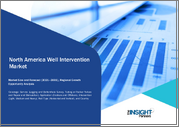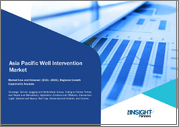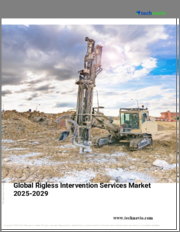
|
시장보고서
상품코드
1836347
조기 개입 서비스 시장 예측(-2032년) : 서비스 유형별, 병상별, 연령층별, 제공 형태별, 최종 사용자별, 지역별 세계 분석Early Intervention Services Market Forecasts to 2032 - Global Analysis By Service Type, Condition Type, Age Group, Delivery Model, End User and By Geography |
||||||
Stratistics MRC에 따르면 세계의 조기 개입 서비스 시장은 2025년에 3,098억 달러를 차지하고, 예측 기간 중 CAGR은 10.4%를 나타내 2032년에는 6,194억 달러에 이를 전망입니다.
조기 개입 서비스(Early Intervention Services - EIS)는 발달에 지연이 있거나 장애의 위험이 있는 보통 출생부터 3세까지 유아를 돕기 위해 고안된 전문 프로그램입니다. 이러한 서비스는 개별 개입을 통해 어린이의 인지적, 신체적, 커뮤니케이션적, 사회적, 정서적 발달을 향상시키는 데 중점을 둡니다. EIS에서는 종종 치료사, 교육자 및 의료 전문가를 포함한 학제 간 팀이 가족과 긴밀하게 협력하면서 맞춤형 계획을 수립합니다. 조기 지원은 발달 문제에 신속하게 대처할 뿐만 아니라 성장, 학습 및 장기적인 행복을 키우는 전략을 가족에게 제공합니다.
발달 지연에 대한 인식 증가
발달 검사 프로그램의 확대로 유아기 건강 관리 및 교육 시스템이 재구성되고 있습니다. 소아과 의사, 교육자 및 보육자는 장기적인 결과를 개선하기 위해 조기 발견을 선호합니다. 디지털 플랫폼과 원격 의료와의 통합으로 충분한 서비스를 받지 못한 지역으로의 보급이 진행되고 있습니다. 공중보건 캠페인과 어드보카시 활동은 부모의 참여와 정책 지원을 촉진하고 있습니다. 이러한 역학은 조기 발달 케어를 재정의하고 있습니다.
노동력 부족
노동력 부족은 도시 지역이나 농촌 지역 모두 전문 치료 및 평가 제공을 낮추고 있습니다. 훈련받은 언어치료사, 작업치료사, 발달 소아과 의사가 제한되어 있어 수락과 후속 조치가 지연됩니다. 높은 사례 수와 관리 부담은 개별 치료를 방해합니다. 저소득지역이나 원격지에서는 인재 확보와 정착의 과제가 심각해지고 있습니다. 이러한 한계는 조기 개입의 보편적 적용을 향한 진전을 늦추고 있습니다.
센서 기술의 발전
센서 기술의 발전으로 동작 분석, 음성 인식, 행동 모니터링 기술 혁신이 가속화되고 있습니다. 웨어러블, 스마트 장난감, 모바일 앱과의 통합으로 참여와 데이터 수집이 향상되었습니다. AI를 활용한 패턴 인식으로 조기 발견과 개별화된 케어 플랜이 강화되고 있습니다. 의료기술 기업과 조기교육 제공업체 간의 파트너십은 사용 편의성과 규모를 확대하고 있습니다. 이러한 혁신은 발달의 진행 상황을 측정하고 지원하는 방법을 재구성합니다.
문화적, 사회적 편견
사회적 규범이나 문화적 편견이 주요 지역에서의 조기 발견·조기 치료의 방해가 되고 있습니다. 발달의 이정표와 정신 위생에 대한 오해는 정보 공개와 진단을 제한합니다. 단어 벽과 레텔 붙이기의 두려움은 스크리닝 프로그램에 참여를 제한합니다. 치료 및 제도적 지원에 대한 지역 수준의 저항이 보급을 늦추고 있습니다. 이러한 요인은 조기 개입에 대한 접근에서 아웃리치와 공정성을 약화시킵니다.
COVID-19의 영향 :
COVID-19의 대유행은 면역력을 지원하는 저당 제품에 대한 수요가 가속화되어 식물 유래 감미료에 대한 관심이 높아졌습니다. 락 다운과 건강에 대한 우려에서 소비는 기능성 음료와 가정에서 조리식으로 이동했습니다. 공급망의 혼란으로 인해 주요 식물 원료의 가용성과 조달이 일시적으로 악화되었습니다. 팬대믹 이후의 회복은 현지 생산과 깨끗한 라벨 혁신에 대한 투자를 촉진합니다. 디지털 소매 및 웰니스 플랫폼은 소비자의 접근과 교육을 확대하고 있습니다. 위기는 천연 감미료를 틈새에서 메인 스트림으로 밀어 올렸습니다.
예측 기간 동안 언어치료 분야가 최대가 될 전망
언어치료 분야는 유아기의 의사소통 지연에 대처하는 데 핵심적인 역할을 하기 때문에 예측 기간 동안 최대 시장 점유율을 차지할 것으로 예측됩니다. 발달 지연에 대한 의식이 높아지면 표출 언어와 수용 언어 지원에 대한 소개를 촉진하고 있습니다. 원격 요법과 앱 기반 개입과의 통합으로 액세스와 참여가 확대되고 있습니다. 학교, 진료소, 재택 프로그램은 수요 증가에 대응하기 위해 언어 서비스를 확대하고 있습니다. AI의 음성 모델링과 부모가 주도하는 모듈의 진보로 성과와 확장성이 향상되었습니다. 이 분야는 조기 발달 지원의 기초를 지원합니다.
예측 기간 동안 언어장애 분야가 가장 높은 CAGR을 나타낼 것으로 예상
예측 기간 동안 진단 정확도와 사회적인지도가 향상됨에 따라 언어 장애 분야가 가장 높은 성장률을 보일 것으로 예측됩니다. 구음, 유창함, 어용 론적 언어에서의 적을 좁힌 개입에 대한 수요는 다양한 집단에서 가속하고 있습니다. 디지털 스크리닝 툴과 다국어 플랫폼과의 통합으로 도달 범위와 포괄성이 확대되고 있습니다. 신경 발산 커뮤니케이션 패턴에 대한 조사는 치료 설계의 혁신의 원동력이되었습니다. 유아 교육 프로그램과 건강 관리 시스템은 발화 성과를 중요한 발달 지표로 선호합니다.
가장 점유율이 높은 지역
예측 기간 동안 북미는 강력한 정책 프레임워크, 높은 진단 의식, 견고한 자금 조달 메커니즘으로 최대 시장 점유율을 차지할 것으로 예측됩니다. 미국과 캐나다는 IDEA 파트 C 프로그램, 메디케이드, 학교 기반 서비스를 통해 조기 개입을 확대하고 있습니다. 디지털 플랫폼, 인적 자원 개발 및 종합적 커리큘럼에 대한 투자로 서비스 제공이 강화되었습니다. 주요 치료 제공업체와 학술 기관의 존재는 혁신과 접근을 촉진합니다. 부모의 참여와 옹호 네트워크가 수요와 책임을 강화하고 있습니다.
가장 높은 CAGR을 나타내는 지역 :
예측 기간 동안, 아시아태평양은 건강 관리 시스템의 확대와 발달에 대한 의식이 증가함에 따라 가장 높은 CAGR을 나타낼 것으로 예측됩니다. 중국, 인도, 일본, 동남아시아에서는 공중 보건 캠페인과 교육 개혁을 통해 조기 개입을 확대하고 있습니다. 신흥국의 건강 관리 투자 증가는 언어 요법, 작업 요법 및 발달 스크리닝에 대한 액세스를 가속화하고 있습니다. 모바일 진단과 문화에 적응한 케어 모델의 지역 혁신은 합리적인 가격과 도달 범위를 향상시키고 있습니다. 종합적이고 확장 가능한 유아 지원에 대한 수요가 급속한 전개를 뒷받침하고 있습니다.
무료 주문을 받아서 만드는 서비스 :
이 보고서를 구독하는 고객은 다음 무료 맞춤설정 옵션 중 하나를 사용할 수 있습니다.
- 기업 프로파일
- 추가 시장 기업의 종합적 프로파일링(3개사까지)
- 주요 기업의 SWOT 분석(3개사까지)
- 지역 세분화
- 고객의 관심에 응한 주요국 시장 추계·예측·CAGR(주 : 타당성 확인에 따름)
- 경쟁 벤치마킹
- 제품 포트폴리오, 지리적 존재, 전략적 제휴에 기반한 주요 기업 벤치마킹
목차
제1장 주요 요약
제2장 서문
- 개요
- 이해관계자
- 조사 범위
- 조사 방법
- 데이터 마이닝
- 데이터 분석
- 데이터 검증
- 조사 접근
- 조사 자료
- 1차 조사 자료
- 2차 조사 정보원
- 전제조건
제3장 시장 동향 분석
- 성장 촉진요인
- 성장 억제요인
- 기회
- 위협
- 최종 사용자 분석
- 신흥 시장
- COVID-19의 영향
제4장 Porter's Five Forces 분석
- 공급기업의 협상력
- 구매자의 협상력
- 대체품의 위협
- 신규 참가업체의 위협
- 경쟁 기업 간 경쟁 관계
제5장 세계의 조기 개입 서비스 시장 : 서비스 유형별
- 언어 치료
- 작업 치료
- 물리 치료
- 행동 치료(ABA, CBT)
- 발달 소아과
- 심리 상담
- 기타
제6장 세계의 조기 개입 서비스 시장 : 병상별
- 자폐 스펙트럼 장애(ASD)
- 주의력 결핍 과잉 행동 장애(ADHD)
- 발달 지연
- 언어 및 말하기 장애
- 감각 처리 장애
- 뇌성 마비
- 기타
제7장 세계의 조기 개입 서비스 시장 : 제공 형태별
- 대면 서비스
- 원격의료 및 가상치료
- 하이브리드
제8장 세계의 조기 개입 서비스 시장 : 연령층별
- 영아(0-2세)
- 유아(2-5세)
- 아동(5-12세)
- 청소년(12-18세)
제9장 세계의 조기 개입 서비스 시장 : 최종 사용자별
- 병원 및 전문 클리닉
- 조기 개입 센터
- 학교 및 교육기관
- 재택 케어
- 정부 및 NGO 프로그램
- 기타
제10장 세계의 조기 개입 서비스 시장 : 지역별
- 북미
- 미국
- 캐나다
- 멕시코
- 유럽
- 독일
- 영국
- 이탈리아
- 프랑스
- 스페인
- 기타 유럽
- 아시아태평양
- 일본
- 중국
- 인도
- 호주
- 뉴질랜드
- 한국
- 기타 아시아태평양
- 남미
- 아르헨티나
- 브라질
- 칠레
- 기타 남미
- 중동 및 아프리카
- 사우디아라비아
- 아랍에미리트(UAE)
- 카타르
- 남아프리카
- 기타 중동 및 아프리카
제11장 주요 발전
- 계약/파트너십/협업/합작투자(JV)
- 인수와 합병
- 신제품 발매
- 사업 확대
- 기타 주요 전략
제12장 기업 프로파일링
- Action Behavior Centers
- Kinney Center for Autism Education and Support
- PresenceLearning
- Centria Autism
- Center for Autism and Related Disorders(CARD)
- n2y LLC
- Cobb Pediatric Therapy Services
- Perkins School for the Blind
- ChanceLight Education
- Franciscan Children's
- Proud Moments ABA
- ZERO TO THREE
- Children's Specialized Hospital
- Center for Social Dynamics
According to Stratistics MRC, the Global Early Intervention Services Market is accounted for $309.8 billion in 2025 and is expected to reach $619.4 billion by 2032 growing at a CAGR of 10.4% during the forecast period. Early Intervention Services (EIS) are specialized programs designed to support infants and young children, typically from birth to age three, who have developmental delays or are at risk of disabilities. These services focus on enhancing a child's cognitive, physical, communication, social, and emotional development through individualized interventions. EIS often involve a multidisciplinary team, including therapists, educators, and healthcare professionals, working closely with families to create tailored plans. Early support not only addresses developmental challenges promptly but also empowers families with strategies to foster growth, learning, and long-term well-being.
Market Dynamics:
Driver:
Increased awareness of developmental delays
Expansion of developmental screening programs is reshaping early childhood healthcare and education systems. Pediatricians, educators, and caregivers are prioritizing early identification to improve long-term outcomes. Integration with digital platforms and telehealth is expanding reach in underserved regions. Public health campaigns and advocacy efforts are fostering parental engagement and policy support. These dynamics are redefining early-stage developmental care.
Restraint:
Workforce shortages
Workforce shortages are degrading delivery of specialized therapies and assessments in both urban and rural settings. Limited availability of trained speech therapists, occupational therapists, and developmental pediatricians is slowing intake and follow-up. High caseloads and administrative burdens are impeding individualized care. Recruitment and retention challenges are intensifying in low-income and remote regions. These limitations are delaying progress toward universal early intervention coverage.
Opportunity:
Advancements in sensor technology
Advancements in sensor technology are accelerating innovation in motion analysis, speech recognition, and behavioral monitoring. Integration with wearables, smart toys, and mobile apps is improving engagement and data capture. AI-driven pattern recognition is enhancing early detection and personalized care planning. Partnerships between medtech firms and early education providers are expanding usability and scale. These innovations are reshaping how developmental progress is measured and supported.
Threat:
Cultural and societal stigmas
Social norms and cultural biases are impeding early identification and treatment in key regions. Misconceptions about developmental milestones and mental health are constraining disclosure and diagnosis. Language barriers and fear of labeling are limiting participation in screening programs. Community-level resistance to therapy and institutional support is slowing adoption. These factors are weakening outreach and equity in early intervention access.
Covid-19 Impact:
The Covid-19 pandemic accelerated demand for immunity-supporting and low-sugar products, boosting interest in plant-based sweeteners. Lockdowns and health concerns shifted consumption toward functional beverages and home-prepared meals. Supply chain disruptions temporarily degraded availability and sourcing of key botanical inputs. Post-pandemic recovery is fostering investment in localized production and clean-label innovation. Digital retail and wellness platforms are expanding consumer access and education. The crisis elevated natural sweeteners from niche to mainstream relevance.
The speech & language therapy segment is expected to be the largest during the forecast period
The speech & language therapy segment is expected to account for the largest market share during the forecast period due to its central role in addressing communication delays across early childhood. Rising awareness of developmental delays is driving referrals for expressive and receptive language support. Integration with teletherapy and app-based interventions is expanding access and engagement. Schools, clinics, and home-based programs are scaling speech services to meet rising demand. Advances in AI speech modeling and parent-led modules are improving outcomes and scalability. This segment anchors the foundation of early developmental support.
The speech & language disorders segment is expected to have the highest CAGR during the forecast period
Over the forecast period, the speech & language disorders segment is predicted to witness the highest growth rate as diagnostic precision and public awareness improve. Demand for targeted interventions in articulation, fluency, and pragmatic language is accelerating across diverse populations. Integration with digital screening tools and multilingual platforms is expanding reach and inclusivity. Research into neurodivergent communication patterns is driving innovation in therapy design. Early childhood programs and healthcare systems are prioritizing speech outcomes as key developmental indicators.
Region with largest share:
During the forecast period, the North America region is expected to hold the largest market share due to strong policy frameworks, high diagnostic awareness, and robust funding mechanisms. United States and Canada are scaling early intervention through IDEA Part C programs, Medicaid, and school-based services. Investment in digital platforms, workforce training, and inclusive curricula is enhancing service delivery. Presence of leading therapy providers and academic institutions is driving innovation and access. Parental engagement and advocacy networks are reinforcing demand and accountability.
Region with highest CAGR:
Over the forecast period, the Asia Pacific region is anticipated to exhibit the highest CAGR as healthcare systems expand and developmental awareness rises. China, India, Japan, and Southeast Asia are scaling early intervention through public health campaigns and education reforms. Increased healthcare investments in emerging economies are accelerating access to speech therapy, occupational therapy, and developmental screening. Local innovation in mobile diagnostics and culturally adapted care models is improving affordability and reach. Demand for inclusive and scalable early childhood support is driving rapid deployment.
Key players in the market
Some of the key players in Early Intervention Services Market include Action Behavior Centers, Kinney Center for Autism Education and Support, PresenceLearning, Centria Autism, Center for Autism and Related Disorders (CARD), n2y LLC, Cobb Pediatric Therapy Services, Perkins School for the Blind, ChanceLight Education, Franciscan Children's, Proud Moments ABA, ZERO TO THREE, Children's Specialized Hospital and Center for Social Dynamics.
Key Developments:
In May 2025, ABC intensified efforts to expand Medicaid coverage for ABA therapy in Texas, Colorado, and Arizona. The initiative aims to increase access to early intervention services by advocating for higher reimbursement rates and engaging with policymakers to ensure more children benefit from ABA therapy.
In February 2022, PresenceLearning acquired Global Teletherapy, a leading provider of teletherapy services to virtual K-12 schools. This acquisition aimed to expand PresenceLearning's reach and capabilities in delivering online therapy solutions.
Service Types Covered:
- Speech & Language Therapy
- Occupational Therapy
- Physical Therapy
- Behavioral Therapy (ABA, CBT)
- Developmental Pediatrics
- Psychological Counseling
- Other Service Types
Condition Types Covered:
- Autism Spectrum Disorders (ASD)
- Attention Deficit Hyperactivity Disorder (ADHD)
- Developmental Delay
- Speech & Language Disorders
- Sensory Processing Disorders
- Cerebral Palsy
- Other Condition Types
Delivery Modes Covered:
- In-Person
- Telehealth & Virtual Therapy
- Hybrid
Age Groups Covered:
- Infants (0-2 Years)
- Toddlers (2-5 Years)
- Children (5-12 Years)
- Adolescents (12-18 Years)
End Users Covered:
- Hospitals & Specialty Clinics
- Early Intervention Centers
- Schools & Educational Institutions
- Homecare Settings
- Government & NGO Programs
- Other End Users
Regions Covered:
- North America
- US
- Canada
- Mexico
- Europe
- Germany
- UK
- Italy
- France
- Spain
- Rest of Europe
- Asia Pacific
- Japan
- China
- India
- Australia
- New Zealand
- South Korea
- Rest of Asia Pacific
- South America
- Argentina
- Brazil
- Chile
- Rest of South America
- Middle East & Africa
- Saudi Arabia
- UAE
- Qatar
- South Africa
- Rest of Middle East & Africa
What our report offers:
- Market share assessments for the regional and country-level segments
- Strategic recommendations for the new entrants
- Covers Market data for the years 2024, 2025, 2026, 2028, and 2032
- Market Trends (Drivers, Constraints, Opportunities, Threats, Challenges, Investment Opportunities, and recommendations)
- Strategic recommendations in key business segments based on the market estimations
- Competitive landscaping mapping the key common trends
- Company profiling with detailed strategies, financials, and recent developments
- Supply chain trends mapping the latest technological advancements
Free Customization Offerings:
All the customers of this report will be entitled to receive one of the following free customization options:
- Company Profiling
- Comprehensive profiling of additional market players (up to 3)
- SWOT Analysis of key players (up to 3)
- Regional Segmentation
- Market estimations, Forecasts and CAGR of any prominent country as per the client's interest (Note: Depends on feasibility check)
- Competitive Benchmarking
- Benchmarking of key players based on product portfolio, geographical presence, and strategic alliances
Table of Contents
1 Executive Summary
2 Preface
- 2.1 Abstract
- 2.2 Stake Holders
- 2.3 Research Scope
- 2.4 Research Methodology
- 2.4.1 Data Mining
- 2.4.2 Data Analysis
- 2.4.3 Data Validation
- 2.4.4 Research Approach
- 2.5 Research Sources
- 2.5.1 Primary Research Sources
- 2.5.2 Secondary Research Sources
- 2.5.3 Assumptions
3 Market Trend Analysis
- 3.1 Introduction
- 3.2 Drivers
- 3.3 Restraints
- 3.4 Opportunities
- 3.5 Threats
- 3.6 End User Analysis
- 3.7 Emerging Markets
- 3.8 Impact of Covid-19
4 Porters Five Force Analysis
- 4.1 Bargaining power of suppliers
- 4.2 Bargaining power of buyers
- 4.3 Threat of substitutes
- 4.4 Threat of new entrants
- 4.5 Competitive rivalry
5 Global Early Intervention Services Market, By Service Type
- 5.1 Introduction
- 5.2 Speech & Language Therapy
- 5.3 Occupational Therapy
- 5.4 Physical Therapy
- 5.5 Behavioral Therapy (ABA, CBT)
- 5.6 Developmental Pediatrics
- 5.7 Psychological Counseling
- 5.8 Other Service Types
6 Global Early Intervention Services Market, By Condition Type
- 6.1 Introduction
- 6.2 Autism Spectrum Disorders (ASD)
- 6.3 Attention Deficit Hyperactivity Disorder (ADHD)
- 6.4 Developmental Delay
- 6.5 Speech & Language Disorders
- 6.6 Sensory Processing Disorders
- 6.7 Cerebral Palsy
- 6.8 Other Condition Types
7 Global Early Intervention Services Market, By Delivery Mode
- 7.1 Introduction
- 7.2 In-Person
- 7.3 Telehealth & Virtual Therapy
- 7.4 Hybrid
8 Global Early Intervention Services Market, By Age Group
- 8.1 Introduction
- 8.2 Infants (0-2 Years)
- 8.3 Toddlers (2-5 Years)
- 8.4 Children (5-12 Years)
- 8.5 Adolescents (12-18 Years)
9 Global Early Intervention Services Market, By End User
- 9.1 Introduction
- 9.2 Hospitals & Specialty Clinics
- 9.3 Early Intervention Centers
- 9.4 Schools & Educational Institutions
- 9.5 Homecare Settings
- 9.6 Government & NGO Programs
- 9.7 Other End Users
10 Global Early Intervention Services Market, By Geography
- 10.1 Introduction
- 10.2 North America
- 10.2.1 US
- 10.2.2 Canada
- 10.2.3 Mexico
- 10.3 Europe
- 10.3.1 Germany
- 10.3.2 UK
- 10.3.3 Italy
- 10.3.4 France
- 10.3.5 Spain
- 10.3.6 Rest of Europe
- 10.4 Asia Pacific
- 10.4.1 Japan
- 10.4.2 China
- 10.4.3 India
- 10.4.4 Australia
- 10.4.5 New Zealand
- 10.4.6 South Korea
- 10.4.7 Rest of Asia Pacific
- 10.5 South America
- 10.5.1 Argentina
- 10.5.2 Brazil
- 10.5.3 Chile
- 10.5.4 Rest of South America
- 10.6 Middle East & Africa
- 10.6.1 Saudi Arabia
- 10.6.2 UAE
- 10.6.3 Qatar
- 10.6.4 South Africa
- 10.6.5 Rest of Middle East & Africa
11 Key Developments
- 11.1 Agreements, Partnerships, Collaborations and Joint Ventures
- 11.2 Acquisitions & Mergers
- 11.3 New Product Launch
- 11.4 Expansions
- 11.5 Other Key Strategies
12 Company Profiling
- 12.1 Action Behavior Centers
- 12.2 Kinney Center for Autism Education and Support
- 12.3 PresenceLearning
- 12.4 Centria Autism
- 12.5 Center for Autism and Related Disorders (CARD)
- 12.6 n2y LLC
- 12.7 Cobb Pediatric Therapy Services
- 12.8 Perkins School for the Blind
- 12.9 ChanceLight Education
- 12.10 Franciscan Children's
- 12.11 Proud Moments ABA
- 12.12 ZERO TO THREE
- 12.13 Children's Specialized Hospital
- 12.14 Center for Social Dynamics




















